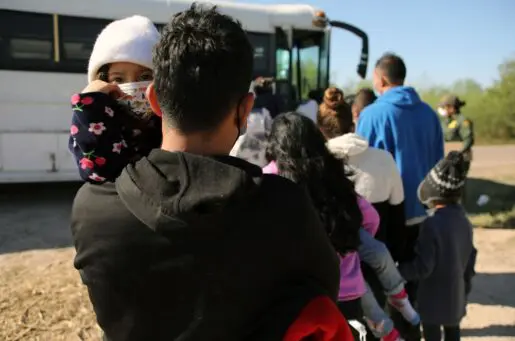Bioethics Forum Essay
Citizen Science: Potential Benefits and Ethical Challenges
Why do citizen science projects get started, and what are the ethical challenges facing them? These questions underlie “When Citizens Do Science: Stories from Labs, Garages, and Beyond,” published in Narrative Inquiry in Bioethics, which explores the world of science happening outside the carefully regulated bubble of academic research. “This is not to imply,” writes editor Lisa Rasmussen at the end of her introduction, “that citizen science research is less ethical than conventional research. However, citizen scientists are human, and like past human researchers, may not see or may be tempted to ignore ethical issues in their work that oversight by others might have helped to identify.”
The personal stories in the publication reflect the staggering variety of this scientific underground. Who participates in citizen science? In the case of Ian Faulkner Soutar, an interest in inexpensive treatments for his arthritis was the motivation. “Normally, double blind studies, in which both the participants and researchers don’t know who is receiving a particular intervention, are only attempted by corporations who can afford the testing,” Soutar writes. “Thus the subject matter tested needs to relate directly to profitable products that the corporation paying for the study needs to sell.” Soutar has found relief using inexpensive boron supplements, and he outlines how a double blind study could be conducted on the internet with a small team at very little cost. So far, Soutar has found anecdotal success in a small sample of colleagues: “At the University of Victoria in Mechanical Engineering, we have a club whose members have tried boron supplements to treat arthritis. [. . . ] Of course, this is not a real study but it did prevent suffering in our group. It seemed to work in about 80% of cases.”
Personal investment in therapeutic outcomes can motivate the citizen scientist. This is especially true of Hillary Savioe, whose daughter, Esmé, was born with symptoms that proved mysterious to doctors. “After years of genetic testing, we now know there to be four small mutations in Esmé’s genes PCDH19, SCN8A, TBL1XR1, and MAP3K7,” Savioe writes. “The disorders associated with these mutations are, each one of them, rarer than the next—with diagnosed populations as small as 6.” Realizing that she could not rely on medical professionals to rally around such a small sample size, Savioe became an expert in her daughter’s condition, attending scientific conferences, decoding genetic texts late into the night, and establishing The Cute Foundation to fund research into two of Esmé’s four genetic mutations. Read the full text of Hillary’s story, “On Parenting from the Place Where Science, Medicine, and Love Collide.”
Like Hillary, Alzheimer’s disease researchers at Cornell realized they could not achieve their goals with traditional methods. Though their recent findings were promising, the complicated data—involving capillaries in mouse brains—could take decades of analysis before a drug could be developed that could safely restore blood flow in the mouse’s brains. In other words, the researchers were looking for the first effective treatment for Alzheimer’s disease, but the going was slow. The researchers developed Stall Catchers, a citizen science game, as part of what they called the EyesOnAlz project. In one month after the game was launched, almost 1,000 volunteers analyzed 96,000 vessels. Stall Catchers has continued to grow, organizing outreach like “catchathon”s—“a synchronized online event with 20 teams from 15 countries and six continents.” How do you get so many people to participate? “Easy, you buy them pizza,” writes Pietro Michelucci, who was part of the research team, “a lesson we learned from Erin Lamichhane, a middle school teacher who used that incentive to entice her students to come into school on a Saturday to clinch their victory in our month-long competition.” This group of students completed 8 months worth of lab research in just four weeks.
Commentator Toby Schonfeld was less surprised by citizen scientists motivated in the field of biomedicine than she was by stories that described participants pursuing research with “no hope of individual or even societal-level therapies to gain from these investigations. Rather,” Schonfeld writes, “the desire to ‘give back’ when pursuing recreation or other forms of leisure activities may make this the purest form of altruism in research.” In Allison M. Lee’s story, Antarctic tourists participate in collecting samples of phytoplankton within fjord ecosystems. Warming temperatures and melting glaciers are threatening to change the type of blooming phytoplankton, impacting the animals like seals, whales, and penguins who depend on those phytoplankton for food. Coordinating research trips (which can take years to plan) with peak phytoplankton blooms proves challenging, and tourists outnumber scientists in Antarctica nearly 10 to 1.
Lee’s project, FjordPhyto, recruits travelers to sample various fjords from their tour boats—over 450 tourists were involved during the 2017-to-2018 season. The positive feedback from the participants convinced Lee it was “almost unethical to not include visitors” in the Antarctic research. Lee emphasizes the importance of educating people about her tiny research subjects: “Phytoplankton, although microscopic, not only support the base of the food web, they also contribute to over half of Earth’s oxygen—that’s more than the trees and plants on land combined!” The educational component makes citizen science projects like FjordPhyto distinct from more insular traditional science. Lee summarizes: “I often have a quote by Baba Dioum floating in my mind that says: ‘In the end, we will conserve only what we love, we will love only what we understand, and we will understand only what we are taught.’”
The ethical challenges that most often present themselves in these narratives are those inherent to the use of volunteers to conduct research, as well as the absence of a governing body to decide if the research is good or bad. The diversity of the projects described in the symposium present a challenge for ethicists who might propose broad guidelines for citizen science. However, Schonfeld believes that the value of citizen science is directly related to this diversity—providing opportunities for all types of engagement and expanding its innovative potential. “Homogeneity is not desirable in this context.”
Mary Click is the communications coordinator for Narrative Inquiry in Bioethics.
45% of The Hastings Center’s work is supported by individual donors like you. Support our work.













